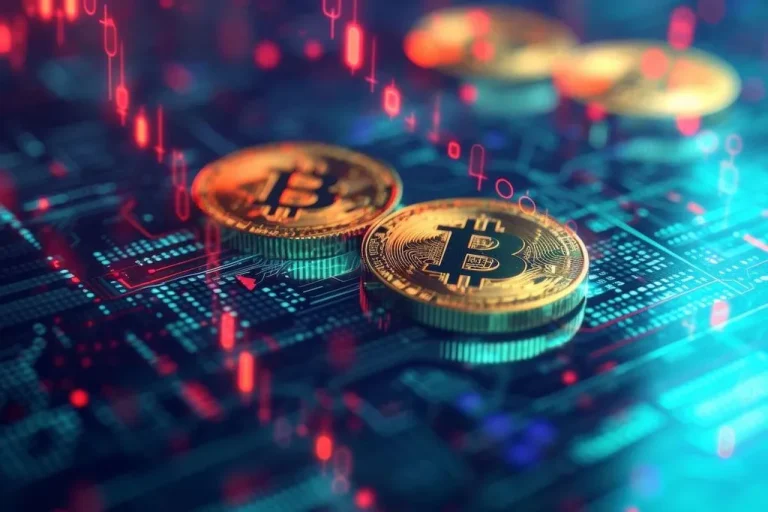Liquidity pools helped handle this downside by having users be incentivized to supply liquidity as an alternative of getting a vendor and buyer match in an order book. This supplied a powerful crypto liquidity provider, decentralized solution to liquidity in DeFi, and was instrumental in unlocking the growth of the DeFi sector. Liquidity pools might have been born from necessity, but their innovation brings a fresh new means to provide decentralized liquidity algorithmically by way of incentivized, consumer funded swimming pools of asset pairs.
Why Is Market Liquidity Important?
In return, they obtain liquidity tokens that represent their share of the pool. LPs earn a fraction of the transaction charges generated by the trading activity within the pool. As a reward for their contributions in resolving liquidity challenges, liquidity suppliers receive LP tokens from Decentralized Exchanges (DEXs) like Uniswap, SushiSwap, and PancakeSwap.
What’s A Liquidity Supplier & How Does It Work?
You may additionally face slippage, which is the difference within the worth you needed to promote an asset for vs. the price it truly offered for. When the unfold is tight, it indicates the market is highly liquid – whereas a wide spread indicates an illiquid market. In the previous, traders used to look to buying and selling quantity as an indicator of liquidity, but latest years have shown us that prime volume doesn’t necessarily constitute high liquidity.
Integration With Different Protocols

Almost any trade will experience easy and natural growth with these three metrics hitting larger levels. As we previously mentioned, the liquidity in the inventory market dried up somewhat rapidly in the stock market crash of 2008, and again in the pandemic-induced crash of 2020. Situations like these could cause severe problems, as traders are abruptly unable to exit a position. The team at CryptoVantage.com only recommends services that we would use ourselves and that we believe will present value to our readers. We advocate for you to do your own analysis and make educated financial choices.

Greatest Time To Buy Crypto? A Look At Probably The Most Worthwhile Days, Months
The consistent institutional inflow from MicroStrategy, MARA, and spot Bitcoin ETFs may set the stage for a Q4 rally. Hence the fourth quarter may see the next bounce if the Federal Reserve cuts interest rates by 75 bps. The current rate cuts have already had a noticeable influence on the crypto market. Bitcoin value is nearing the $64,000 mark, while Ethereum has jumped past $2,500.

Impermanent loss happens when the costs of tokens in a liquidity pool change in comparison with once they had been deposited. The extra vital the change, the larger the potential loss when in comparability with holding the tokens outside the pool. However, liquidity varies extensively amongst completely different cryptocurrencies and buying and selling platforms. Cryptocurrency markets are distinguished by a quantity of distinctive factors, including their decentralised nature, the global and continuous trading environment, and the varied vary of members. Additionally, as these markets do not adhere to traditional buying and selling hours, they potentially offer enhanced liquidity opportunities.
- AMMs could be shortly adapted to include new tokens or change their pricing mechanisms through decentralised governance.
- With Cardano trading close to $0.354, a push above the upper band at $0.3666 might unlock additional momentum.
- Liquidity pools helped tackle this problem by having users be incentivized to offer liquidity instead of having a vendor and purchaser match in an order book.
- Liquidity swimming pools are designed to incentivize customers of various crypto platforms, known as liquidity suppliers (LPs).
Introduction To Liquidity In Crypto Markets
Assets deposited into DEX liquidity swimming pools are managed by these contracts, which lack a central overseeing authority. Vulnerabilities or bugs in smart contracts pose a threat of irrecoverable fund loss, as evidenced by incidents like the most important hack on Uniswap in July 2022. Many decentralized platforms leverage automated market makers to use liquid pools for allowing digital belongings to be traded in an automated and permissionless method. In reality, there are well-liked platforms that center their operations on liquidity pools. A crypto liquidity provider (LP) is an individual or entity contributing their crypto property to a liquidity pool.
What Cryptocurrency Exchanges Provide Most Liquidity?

A liquidity pool is a crowdsourced pool of cryptocurrencies or tokens locked in a wise contract that is used to facilitate trades between the belongings on a decentralized exchange (DEX). In the crypto market, a liquidity supplier (LP) is instrumental in making certain environment friendly trading, significantly in decentralized exchanges (DEXs). In CEXs, transactions are mediated through a digital order e-book, whereas DEXs facilitate direct peer-to-peer buying and selling via blockchain algorithms. There are many different DeFi markets, platforms, and incentivized swimming pools that permit you to earn rewards for providing and mining liquidity via LP tokens.
DeFi trading, nonetheless, entails executing trades on-chain, without a centralized get together holding the funds. Each interaction with the order guide requires gasoline fees, which makes it much more costly to execute trades. Please note that an funding in digital belongings carries risks in addition to the alternatives described above. This article does not represent investment advice, neither is it an offer or invitation to purchase any digital property. The crypto market is already on the restoration course from its current setbacks, however, it’s important to stay vigilant and discerning when it comes to who you belief with your funds.
Discover how liquidity in crypto markets impacts market dynamics and buying and selling methods, and how liquidity swimming pools work in DeFi. On common, it recorded $6.6 trillion in day by day transactions a day as of April 2019, in accordance with the Bank for International Settlements. On the opposite hand, the true property market is often thought-about to be illiquid. This is as a outcome of properties are often not easily offered, and might contain a long chain, plenty of paperwork in addition to be topic to other variables.
These belongings can be extremely useful, but often lack a liquid market, requiring specialised patrons and probably prolonged sales processes that contain hiring brokers. The value of crypto belongings can improve or lower, and you would lose all or a considerable quantity of your buy value. When assessing a crypto asset, it’s essential so that you just can do your research and due diligence to make the very best judgement, as any purchases shall be your sole responsibility. The integration of cross-chain technologies and interoperability options could tackle the difficulty of market fragmentation, resulting in a more cohesive and liquid market. These advancements, coupled with increasing world adoption of cryptocurrencies, recommend a development in the direction of larger market stability and efficiency. Additionally, the emergence of AMMs has revolutionised liquidity provision by automating the method of market making, lowering reliance on conventional patrons and sellers.
In addition to those advantages, liquidity providers earn revenue from charges or commissions on trades inside liquidity swimming pools of Decentralized Exchanges (DEXs). These charges, typically a small fraction of the transaction’s value, are predominantly rewarded to the suppliers. By contributing property to liquidity pools, they facilitate immediate and automated trading, offering extra inexpensive trading choices than traditional Centralized Exchanges (CEXs).
Read more about https://www.xcritical.in/ here.
